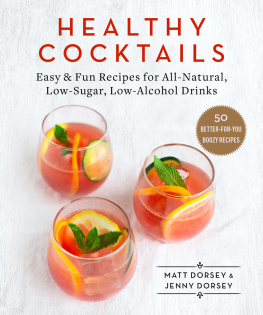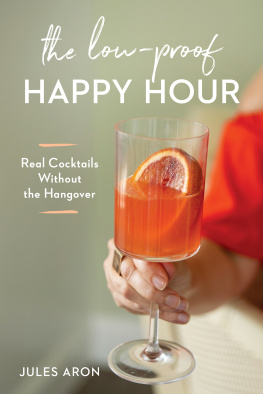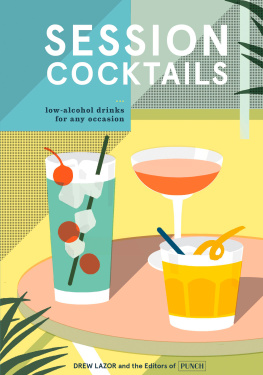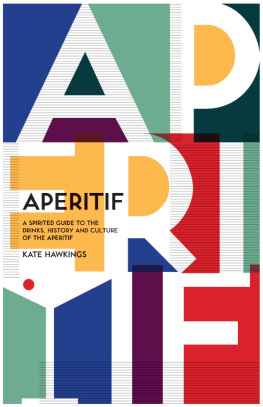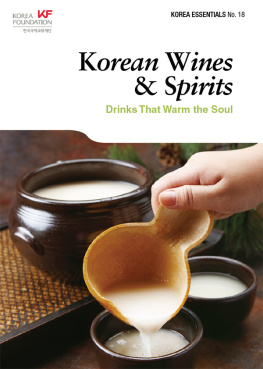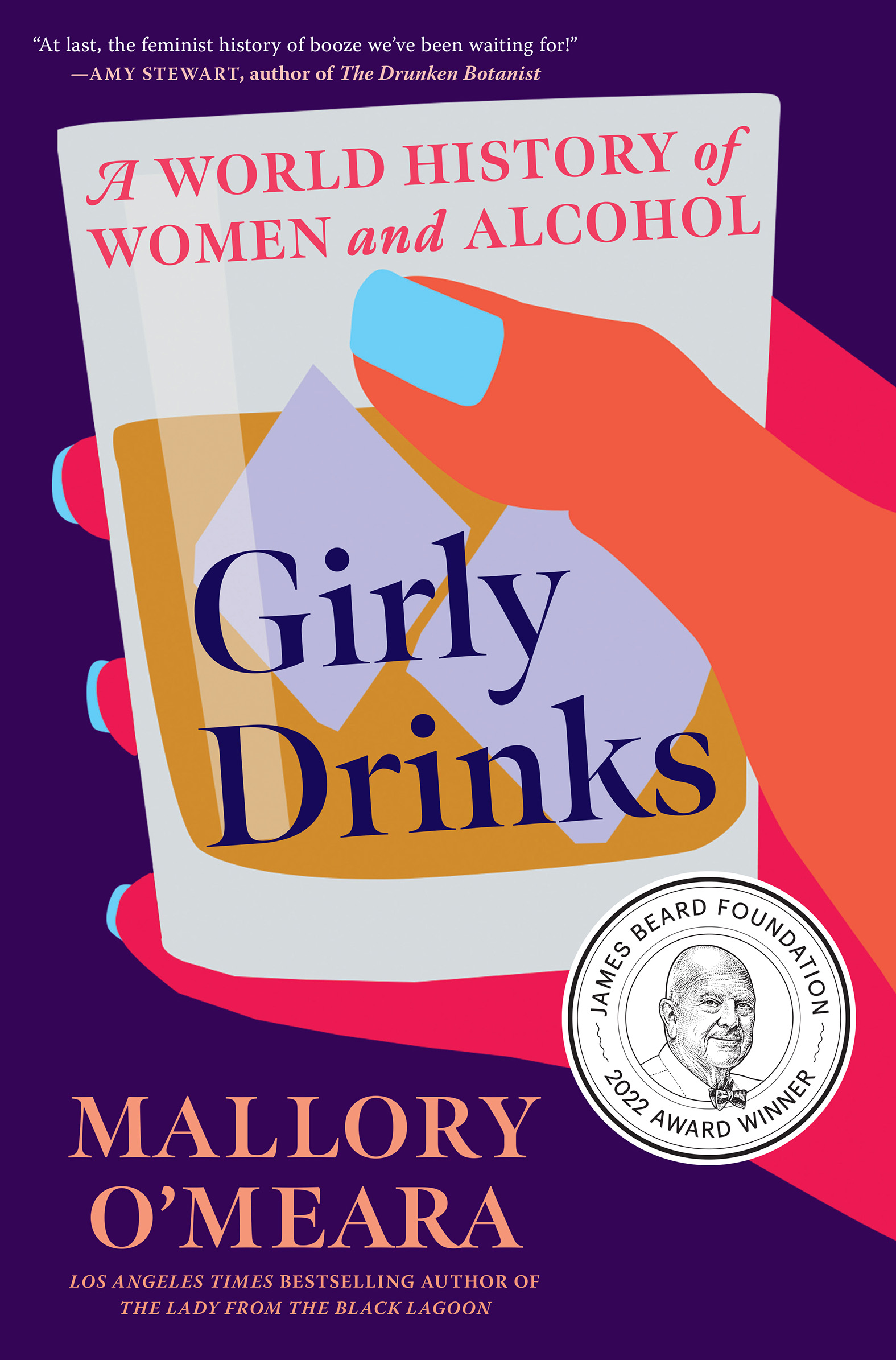
Praise for Girly Drinks
At last, the feminist history of booze weve been waiting for! After centuries of being excluded, ignored, or treated as accessories, Mallory OMeara has put women at the center of a global history of alcohol. From winemakers and distillers to activists, leaders, and change-makers, Girly Drinks takes us on a whirlwind tour of the role women have played in what we drink, and how, when, and why we drink it.
Amy Stewart, author of The Drunken Botanist
Girly Drinks is anything buta raw shot of boozy history that stings as well as it soothes!
Patton Oswalt
With this lively book Mallory OMeara has provided a real service, giving us not only a long-overdue new perspective on a great many familiar issues, but also raising all kinds of other issues that are unfamiliar and shouldnt be.
David Wondrich, author of Imbibe!
Cheers to Mallory OMeara and her serious yet seriously entertaining treatise on the history of gendered drinks. Girly Drinks will introduce you to queens and nuns, bootleggers and bartenders, telling their stories and proving the point that all drinks are girly drinks.
Jeanette Hurt, author of Wisconsin Cocktails and Drink Like a Woman
Mallory OMeara is the award-winning and bestselling author of The Lady from the Black Lagoon: Hollywood Monsters and the Lost Legacy of Milicent Patrick. It won the 2019 SCIBA Book Award for Biography and the Rondo Hatton Classic Horror Award, and was nominated for both a Locus and a Hugo award. Every week, Mallory cohosts the literary podcast Reading Glasses. A New England native, she now lives in the mountains near Los Angeles with her two cats, where she is at work on her latest nonfiction book. Bourbon is her drink of choice.
www.MalloryOMeara.com
Girly Drinks
A World History of Women and Alcohol
Mallory OMeara

For Lauren,
who, upon hearing me complain that
there wasnt a written history of women drinking,
told me to write it.
Contents
The Dawn of Time
The Ancient World
The Early Middle Ages
The High Middle Ages
The Renaissance
The Eighteenth Century
The Nineteenth Century
The Twentieth Century
The 1920s
The 1930s and 40s
The 1950s
The 1960s and 70s
The 1980s and 90s
The 2000s
The 2010s
Dont try me nobody, cause you will never win
Ill fight the army, navy, just me an my gin
Bessie Smith
...it went straight down into my stomach like a sword swallowers sword and made me feel powerful and godlike.
Sylvia Plath
Comfortable shoes and a strong drink
what more could a girl need?
Woman wearing a green dress in the bathroom of the
Strange Brew Tavern, Manchester, New Hampshire, 2013
INTRODUCTION
Skinny margaritas. Appletinis. Cosmos. Drinks flavored like cake or whipped cream. Drinks featuring cake or whipped cream. Bright red maraschino cherries and pastel umbrellas. You know, girly drinks. Drinks for girls.
These are the drinks you snicker at when you hear someone order them at the bar. You feel embarrassed about choosing them off the menu. They might even be your guilty pleasure. Beer and scotch, those are real drinks. Theyre respectable drinks. Why? Well, theyre mens drinks.
Hang on a minute.
Who decided that drinking was a gendered act? When did certain kinds of alcohol first become respectable? Where in the world did this happen? Why did this happen? How did this happen?
Human beings have been imbibing for thousands and thousands of years. When did we start roping off certain types of booze with a pink frilly ribbon and condemning them as girly drinks? And why is marking a drink feminine a bad thing in the first place?
The truth is, all drinks are girly drinks. Not just because women have been drinking since alcohol was invented, but because theyve been making and serving it since the beginning, too.
I love having a drink. I suspect that if you picked up this book, you do, too.
Like many people, my first exposure to alcoholIm talking real exposure, without your parents aroundwas a lukewarm can of Natural Ice handed to me at a party in someones garage when I was a teenager. I thought then, just like I would think now, that it was pretty gross.
But I didnt want anyone to know that I thought it was gross. I wanted to be cool. I didnt want to be some loser girl who couldnt handle a beer. Because thats what beer was to me: a guy thing. Girls couldnt handle drinks made for guys. Eventually, the nastiness of Natural Ice, which I would still describe as tasting like a sweaty gym sock that rotted in a gutter, convinced me that I needed to try something else if I wanted to drink at all. I couldnt handle real drinks. I needed a girly drink.
So began my teenage dalliances with such alcoholic atrocities as Smirnoff Ice, Mikes Hard Lemonade and Mad Dog 20/20 (blue flavor, please). Of course, teenagers arent drinking for the flavor, theyre drinking whatever they can convince someones older brother to buy for them. When I was a teenager, boys got cheap, gruesome beer and us girls got cloyingly sweet, fizzy drinks.
Once I finally hit legal drinking age, I decided my tastes needed to mature. Thats when I got acquainted with the drink that accompanied me through many parties and bad dates in my early twenties: the vodka soda with lime. I saw people drinking cocktails, but I never experimented. I didnt want to be embarrassed if I ordered something stronger than I could take. Whiskey and scotch were for dudes. I didnt want to flaunt my girliness by ordering a frozen margarita or daiquiri, either. And I was too sheepish to admit that I didnt know the difference between types of wine besides red or white. So vodka and I, we became pals.
Then, I moved to New York City, and I met my best friend, Lauren. She is a cocktail enthusiast, and the first time we ever hung out, she took me to a craft cocktail bar. I had absolutely no idea what I wanted to drink. As an alcohol ignoramus, the menu was overwhelming to me, so I picked something at random. When the glass appeared in front of me, I was enchanted. The dark and smoky rum concoction was delicious, but more importantly, it was interesting. There was talent in the making of it; there was alchemy. I was hooked. I had never put much thought into what I was drinking or all the different flavors that were possible. Alcohol had always been a means to an end. Holding that delicate coupe glass and savoring flavors that werent just sugar and red 40, I realized that it could be so much more.
A couple of years later, I moved to Los Angeles. As a housewarming present, Lauren bought me a home bartending set: a shaker, a bar spoon, a mixing glass, the works. She also bought me a book on cocktails. For the first time in my life, I realized you could get nerdy about alcohol.
My eyes were opened to the science and history behind cocktails and drinking. I was overcome with curiosity. No longer just eager to taste craft drinks, I wanted to learn about them. The history of alcohol and drinking is an amalgamation of anthropology, chemistry, sociology, culinary history, economics, politics and science. I started reading all the books I could, in between shaking up cocktail recipes from them.
Next page

